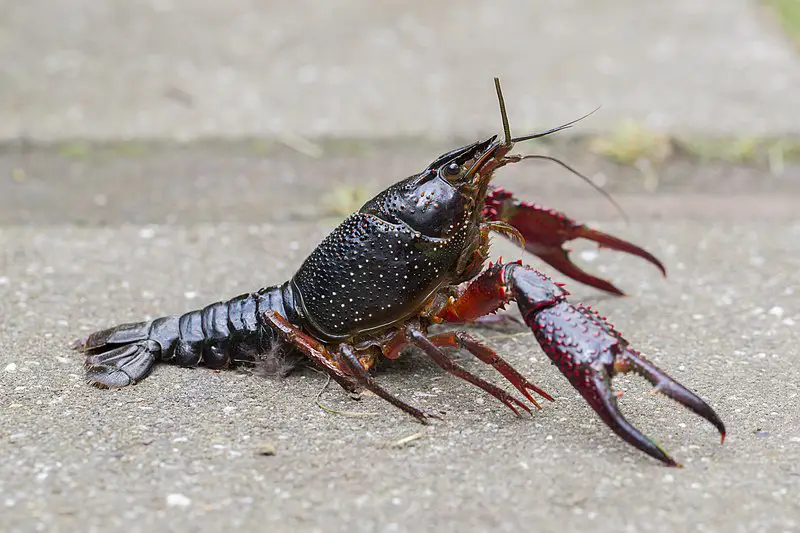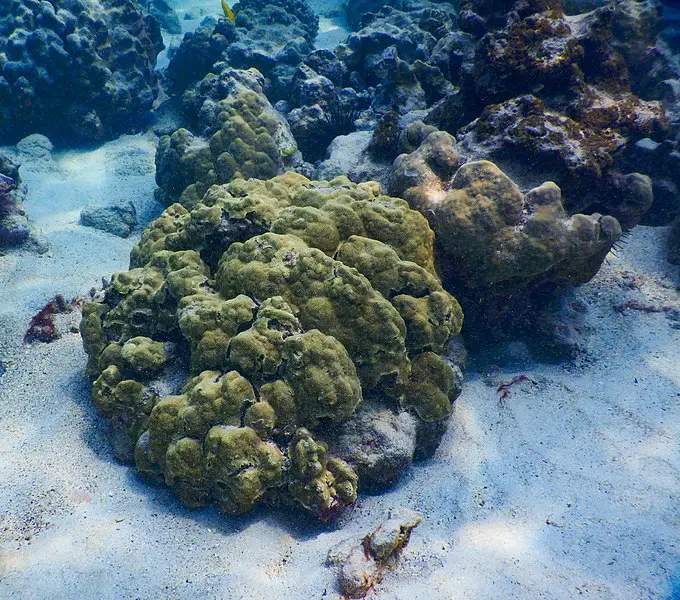Aquariums are at their best when populated with a diverse range of fish and other aquatic species. The crayfish, with such an outgoing personality and diversity in species, is a perfect shellfish for many aquariums.
From the vibrantly colored Dwarf Orange Crayfish to the beautifully speckled Marmorkrebs, there are so many great aquarium crayfish to choose from, but people often wonder how compatible crayfish are with other fish or invertebrates. Will crayfish eat snails?
Crayfish will mostly eat plant matter, but they are omnivorous and will eat snails when given the opportunity. While dwarf crayfish may find it more difficult to eat nails, most species of crayfish are incompatible with snails.
As a general rule, crayfish are incompatible with snails if you want a thriving snail population; however, if you’re looking to control a pest snail population, crayfish might be the perfect shellfish for you.
Crayfish Overview
Crayfish in captivity tend to be hostile towards anything that they can catch. Of course, fast moving fish are often suitable tankmates since they typically swim out of reach.
Compared to shrimp and fish, snails pose no challenge for a hungry crayfish, and most species of crayfish will act aggressively towards snails. Some species, however, are less aggressive, and the temperament will, of course, vary based on the individual.
Most crayfish species are strong enough to crush a snail’s shell with their pincers. Even if they aren’t able to kill the snail, they can still cause significant harm by cracking or bashing the shell against the glass.
Indeed, some crayfish will even be enamored with the pretty colors of a snail’s shell and harass that snail mercilessly.
In general, if you’re looking to have snails with healthy shells, then you should avoid putting a crayfish in your tank, but if your goal is to control the snail population, then crayfish might be the perfect shellfish for the job.
Will My Blue Lobster Eat My Snails?
Blue lobsters will eat algae, decaying plant matter, and dying fish― pretty much anything they can get their pincers on.
That includes snails who have no recourse to escape from a lobster’s death grip; however, blue lobsters are generally less aggressive than crayfish and will be less likely to harass them. If your lobster develops a penchant for hunting snails, though, then the behavior will most likely continue indefinitely.
Will Dwarf Crayfish Eat Pond Snails?
Dwarf crayfish are smaller and don’t tend to be able to bother adult pond snails.
Keep in mind that it’s still a crayfish with territorial and aggressive tendencies, and not being able to kill a snail doesn’t mean that your dwarf crayfish still can’t give those snails a serious case of whiplash.
In general, the bigger the crayfish, the more of a threat they pose to your snails. Dwarf crayfish will be most prone to opportunistic hunting― targeting juvenile snails or those with damaged shells.
Pond snails are built pretty tough with their hard shell made out of calcium, but even a dwarf crayfish can still do some serious damage. Oftentimes, a crayfish’s appetite is dependent on how well they are fed.
Well-fed and well-stimulated crayfish are less likely to attack snails out of hunger or boredom. As long as you are ok with the risk of your snails being harassed, a dwarf crayfish is the best kind of crayfish for compatibility with snails.
Will Crayfish Eat Baby Snails?
Crayfish will absolutely eat baby snails if they are so inclined. Once again, it’s dependent on the temperament and aggression of the individual crayfish, but baby snails are the most likely target of all your snails.
Opportunistic hunters, crayfish will attack anything they perceive as weak or edible, and while they mostly eat plant matter, they’re not opposed to the possibility of snacking on a few juvenile snails.
What Should You Not Feed Crayfish?
In case you’re wondering, it’s perfectly ok for crayfish to eat snails. In fact, it does them good. Crayfish are suited to eating anything organic― whether it be plant or animal matter.
They live by a simple rule: if they can catch it, they’re going to eat it. You should still, of course, give your crayfish a solid variety of foods to promote proper growth and development as well as meeting their nutritional needs.
Pellet foods are perfect for crayfish since they contain lots of essential nutrients, and frozen foods like daphnia, bloodworms, and brine shrimp. You should never feed your crayfish live or uncooked shrimps, however, since they can carry diseases that may be fatal.
Veggies are a good addition to a crayfish’s diet, too. Lettuce leaves, cabbage, zucchini, and cucumber are a perfect treat every now and then.
Always make sure you are proportioning your feeding so that there is very little, if any, food left over. Leftover food in a tank can cause a buildup of ammonia, which can throw your nitrogen cycle out of balance and lead to a whole host of tank issues.
Ensuring that your crayfish is well-fed and happy is the best way to get his attention off harassing your snails. If your crayfish isn’t hungry or bored, then he will be less likely to try to attack your snails.
Of course, that doesn’t mean your snails are safe, and you always run the risk of losing snails whenever you put the two together.
Final Thoughts
Crayfish are unique among aquatic animals in their behavior and personality, and they can add a nice feature to a tank. They will exhibit hunting behaviors and pose some degree of threat to slow-moving fish or shrimp, but these are usually too quick for crayfish.
Snails, however, have no defense other than their shells, which proves inadequate when compared to the crayfish’s brute strength.
In short, crayfish and snails are not compatible if you want your snail population to thrive, but if you’re looking to cut down on the amount of snails in an overrun tank, then the crayfish might be the perfect shellfish for the job.


